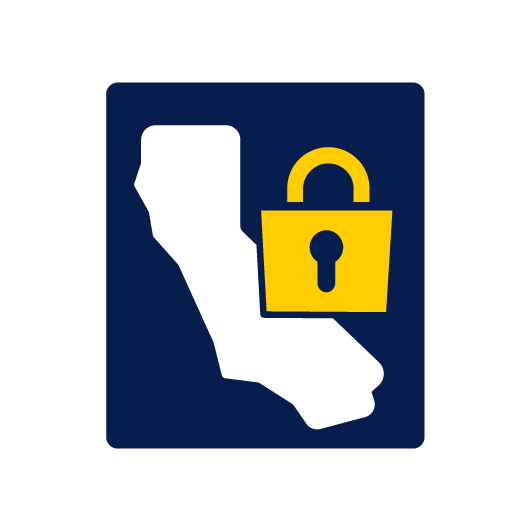Simplify Offline Data Collection With Offline Mobile Forms
More and more businesses are relying on digital apps and real-time data to plan and manage their business operations. Whether it's field researchers out in forests, construction managers on sprawling sites, or field technicians in remote areas, many professionals often find themselves in places with poor or limited internet connection.
How do they efficiently collect and share data with their teams? The simplest solution is to implement offline mobile forms and follow offline data collection best practices.
So, with that in mind, let’s see how offline data collection works, how to navigate common challenges, and how to streamline the process by using offline mobile forms.
How does offline data collection work
Offline data collection is a vital tool for any professional who operates in environments where internet access is unreliable or non-existent. Essentially, this method involves using mobile devices to gather and store data locally until an internet connection is available to sync the data to a central database.
This allows for continuous data collection with little to no additional administrative work in terms of data management.
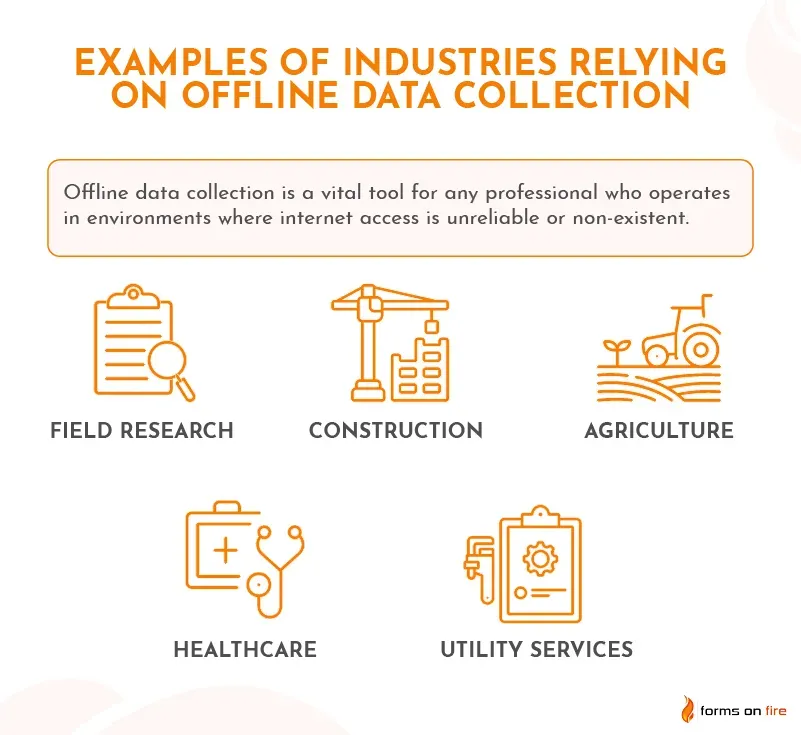
Being able to collect data offline is particularly useful in industries like:
- Field research: Researchers in remote areas rely on offline data collection to locally record their observations. This ensures that no piece of critical information is lost, even in the most isolated locations.
- Construction: On large construction sites, managers and engineers use offline forms to track progress and report issues on the go, syncing data once they return to connected zones.
- Agriculture: Farmers and agricultural technicians track crop growth, weather conditions, and resource allocation across vast areas where internet service is spotty at best.
- Healthcare: In rural or underserved regions, health workers collect patient data during community visits and sync this information to medical records once back online.
- Utility services: Technicians inspecting and maintaining infrastructure in remote areas use offline forms to track their work, perform inspections, and report findings.
By leveraging the power of mobile technology, these forms are not just simple digital replacements of paper; they can include complex features such as barcode scanning, photo uploads, GPS tagging, and more, all operational without a live internet connection.
This capability ensures that workers in all these industries can efficiently gather comprehensive data and easily forward everything to a central database.
Create offline mobile forms with Forms On Fire
Forms On Fire is a no-code platform you can use to build any type of mobile form or application. Companies use it to create process and safety checklists, streamline inspections and audits, gather data, build timesheets, manage inventory, and much more.
We have hundreds of pre-made templates. If you don't find what you're looking for, our team can help you design nearly anything.
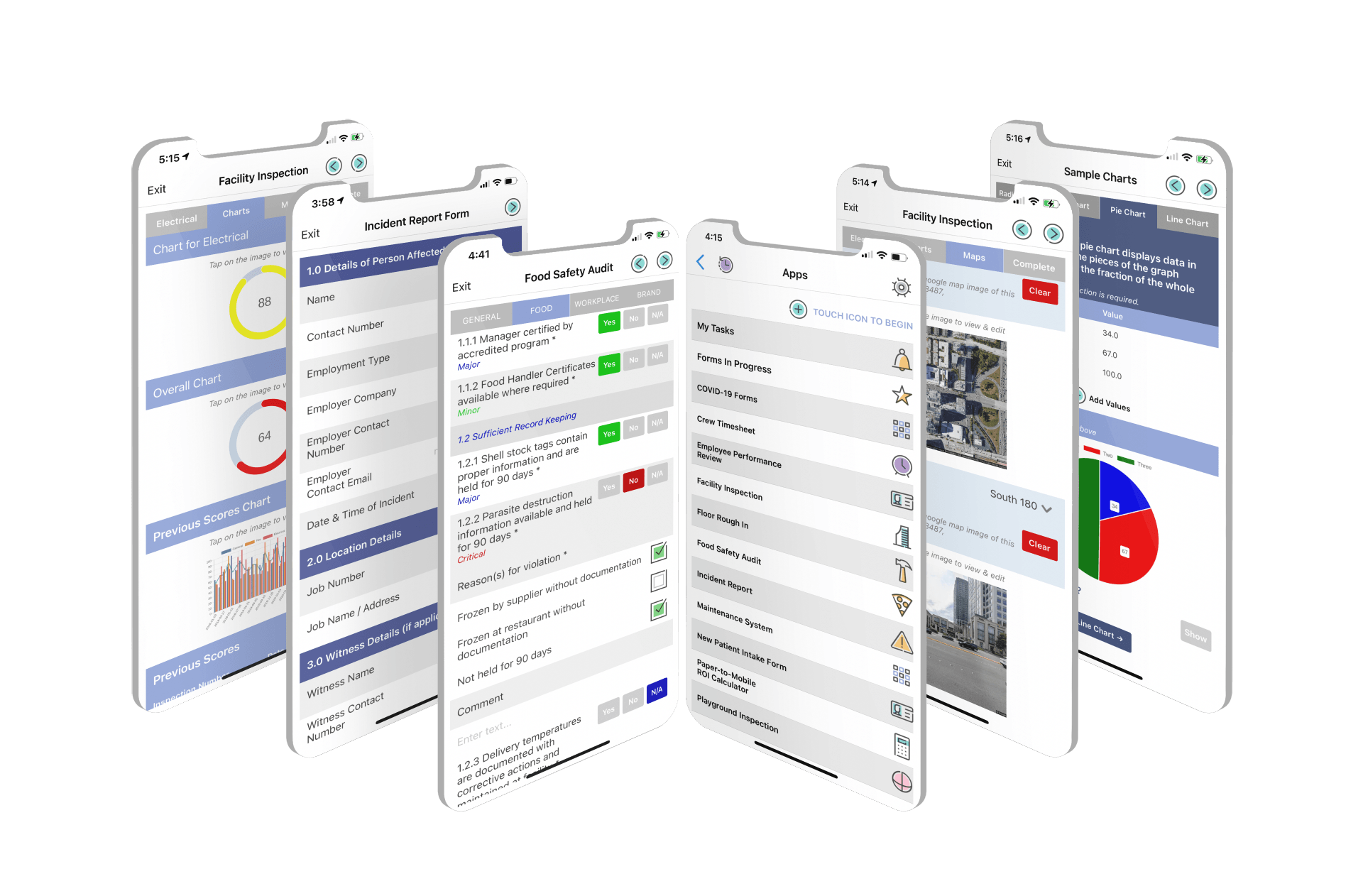
The process is simple.
You design your forms/app using our intuitive drag-and-drop interface. You can include various field types such as text, checkboxes, dropdowns, and more. The platform also supports advanced features like data validation and conditional logic, which improves data accuracy and enables the forms to adapt based on the data entered.
Once your forms are crafted, they can be quickly deployed to your team's mobile devices. We ensure that these forms are fully functional offline, storing collected data locally on the device until an internet connection becomes available.
Many clients that use Forms On Fire heavily rely on our offline mobile forms.
For example Cal-Maine Foods required an app offering a form-based system that worked offline. The app needed to provide the capability to take photos, read barcodes, capture signatures, and transfer the collected information to the company’s existing database.
Here’s how they’ve achieved all of that and more by using Forms On Fire.
The challenges of capturing data in areas with poor internet connectivity
Here are some common issues encountered and how offline mobile data collection helps mitigate these problems:
- Delayed data transmission: Without reliable internet, data collected in the field can't be shared in real-time, delaying critical updates and decisions. Offline mobile forms store data locally and sync it automatically once connectivity is restored, ensuring timely and efficient data transmission.
- Increased risk of data loss: In areas with poor connectivity, the risk of losing data increases if mobile devices are damaged or lost before the data can be backed up. Offline forms reduce this risk by allowing for regular, automatic backups whenever a connection is available.
- Challenges in collaboration and coordination: Planning and coordinating work is tough when team members cannot access information or share updates in real-time. Offline mobile forms include features for task assignments and updates that sync across devices, improving coordination even when offline.
- Difficulty in monitoring and quality control: Monitoring the quality and consistency of data collection is challenging without the ability to closely oversee field activities. Offline forms can be equipped with built-in validation rules that ensure data integrity at the point of entry, irrespective of connectivity.
What to look for in software that offers offline mobile data collection
The following is a list of features managers and field workers find useful in their daily work:
- Barcode scanning: Allows for quick data entry and reduces errors associated with manual input.
- Photo integration: Enables field workers to capture images as part of the data collection, providing visual proof and context.
- Signature collection: Facilitates authorization and validation of data through digital signatures, crucial for compliance and verification.
- Geolocation services: Tags data entries with GPS coordinates to verify the location-specific information and track field operations.
- Voice recordings: Offers an alternative data entry method that can be particularly useful in hands-free or documentation-heavy scenarios.
- Freehand drawing: Useful for marking diagrams or sketches, which is especially valuable in construction, engineering, or design work.
- Form activity tracking: Monitors when forms are opened, edited, and submitted, helping to manage workflows and ensure data timeliness.
- Feedback sharing: Facilitates communication within the team by allowing comments and feedback directly on the form entries.
- Customizable notifications: Sends alerts based on specific triggers or submission events to keep teams informed in real-time.
- Regular back-ups: Ensures data is not lost by automatically backing up the data at set intervals or when a connection is detected.
- Encryption and secure storage methods: Protects sensitive data stored on devices, ensuring compliance with data protection regulations.
- Data synchronization capabilities: Once a connection is reestablished, data should sync smoothly without user intervention or data conflicts.
- Multi-platform support: The software should run across various operating systems and devices (e.g., Android, iOS, Windows).
- User access controls: Features that manage who can view, edit, or delete data based on user roles and permissions help maintain data integrity and security.
- Customizability and scalability: The ability to customize forms and workflows to fit specific project needs is crucial for scalability.
- Integration capabilities: Your offline mobile forms should be able to communicate with other tools (like ERP systems, internal databases, and cloud storage solutions).
- Offline analytics and reporting tools: Tools that allow users to generate reports and conduct analytics offline help in making informed decisions on the ground without needing to sync first.
Now, different businesses will have different needs. Identify which of these features are important to you before evaluating potential solutions.
Sidenote: Forms On Fire supports everything on this list.
Six rules of offline data collection
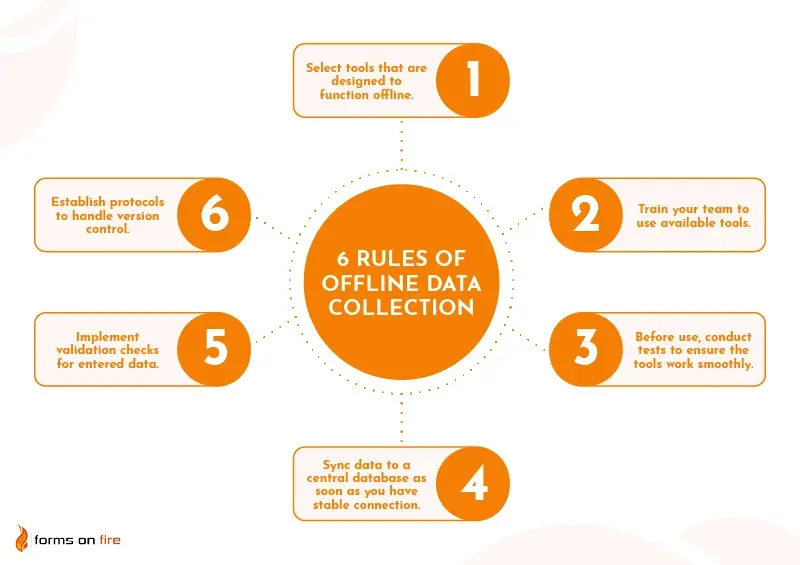
When collecting data in environments with unreliable internet connection, it's crucial to adhere to a set of established practices that ensure the integrity, security, and efficiency of the data collection process:
- Prepare thoroughly: Equip your team with robust training and clear guidelines to handle the data collection tools and understand the data they are gathering. If it is a research project, start with a data collection plan.
- Choose the right tools: Select data collection tools that are designed to function effectively offline and are compatible with multiple device types to ensure flexibility in the field.
- Test your technology: Before deployment, conduct tests to ensure your tools work smoothly and that your data collections forms are easy to use.
- Synchronize your data as soon as possible: Regularly sync data to a central database whenever connectivity is available to minimize any potential for data loss. However, before doing that, make sure you have a stable internet connection.
- Use data validation techniques: Implement form validations and checks to ensure accuracy and completeness of the data entered by field operators (i.e. entering text in the “Age” field should result in a warning prompt that the field should contain a number).
- Ensure data consistency: Establish protocols to handle version control and ensure consistency when data is synchronized from multiple sources or updated offline.
If you can check off each of those rules, you can be confident that your data is both complete and reliable, regardless of where and when it was collected.
For a deeper dive, we expand on some of these rules in our beginner’s guide to field data collection.
Use Forms On Fire as your offline data collection app
Don’t search for the right tool for the job, build one that fits perfectly into your workflow.
Our customer support team will support you every step of the way — be that finding the right offline mobile form template and adjusting it, or building a simple app from scratch through our drag and drop interface.
Forms On Fire platforms offers all of the features you need for efficient and secure offline data collection we mentioned throughout the article. The apps and forms you create can integrate with basically any other tool you might be using.
It’s simple, it’s convenient, and saves tons of time for both field workers and their managers.
Still not convinced?
Take our 14-day free trial or request a demo to get a personalized product walkthrough and see how Forms On Fire can help solve your specific problems.


